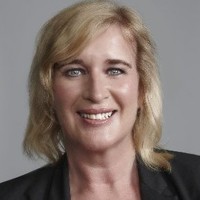
Tips to increase self-service and reduce call volumes
I recently spoke with Bridgette Dalzell, the General Manager of Customer Connection Hubs at Bank of New Zealand (BNZ).
Bridgette is an experienced contact centre leader, having spent the last 25 years involved in customer experience, customer service, and customer sales in the financial services and telecommunications industries.
She has led teams across New Zealand, Australia, India and the Philippines.
She brought some fantastic insight into decreasing call volume, helping customers with self-service, and improving customer experience.
I suspect you’ll find her tips of value.
In the past year, she’s embarked on a journey of customer transformation and improving the customer experience, in part by encouraging customers to use self-service and go digital where possible.
This opportunity presented itself during New Zealand’s first lockdown courtesy of COVID-19.
During this time – like many organisations – the BNZ experienced unprecedented call volumes, partly driven by the closing of their branches during the Level 4 lockdown.
A Quick Change to IVR to Cut Call Volume
Bridgette developed an IVR (Interactive Voice Response) containment strategy to handle this challenge.
The idea was to identify where the opportunities were to encourage customers to self-serve and encourage them to find the information themselves.
This approach was a better option for both customers and the bank than having customers waiting in the queue.

One of the cornerstones to the success of the whole programme was to understand why customers were calling.
Her team did extensive call listening and analysis to understand the critical drivers of customer calls. This analysis identified the easy changes they could make, which would most benefit customers.
They found one opportunity was to move customer interaction with the bank from the phone to online and digital.
A simple change achieved this – they put information about this right up the front of their IVR.
For example, they’d previously had 6,000 to 7,000 customers call a month asking how to change their address for their statement.
That’s on top of customers emailing the same question.
So up the front of their IVR, they specified how to make an address change.
To measure their success, they tracked the number of customers who listened to the message and then hung up.
Brigette terms this ‘positive abandonment’ to distinguish the outcome from an abandoned call where the customer gave up waiting.
Other Quick Fixes
One of the other opportunities identified was reducing call numbers from regular callers.
To do so, they identified customers who called 10 times a month or more.
The team then did an outbound call to those customers, encouraging them to go online in the future to get the answers to their queries.
As a result, the bank experienced a massive drop in the number of customers calling frequently.
Bridgette’s team also did a push to get older customers online.
During the lockdowns, they put a priority line in place for customers over 70 years of age.
These were customers who didn’t usually go online and instead typically went into their branch.
Having been given greater confidence and expertise, over 1,500 customers in this age bracket now do their banking online.
Although Bridgette says that the customer experience transformation is ongoing and always evolving, the bank has made significant improvements.
Over the last couple of months, they’ve taken 14,000 calls out of their service contact centre queues. Very impressive.
Top Tips for You
If you need to decrease call volumes, want to help customers with self-service, and seek to improve CX, Bridgette says one of the first things is understanding why your customers are calling.
Instead of making assumptions, she suggests making decisions based on a decent sample size of data taken from call listening.
Ideally, you’ll want a team dedicated to call listening doing this work.
In Bridgette’s case, she put in place a transformation team to do this work.
From there, you’ll be able to identify your low hanging fruit and develop a strategy as to how you improve customer experience.
It’s also vital to determine how you’ll measure it.
To justify her transformation team’s headcount with 10 FTE (Full Time Equivalents), Bridgette decided the team needs to pay for itself in the reduced call volume and wait time achieved by improving customer experience.
However, she is quick to point out that the bank never looks at customer experience transformation from a cost-saving perspective.
It’s all about creating a better outcome for customers and ensuring they don’t wait in queue for a simple transaction they can solve themselves.
There Will Always be a Place for Contact Centres
Although there has been a push to moving interactions online in the past couple of years, Bridgette believes there will always be a place for contact centres.
At BNZ, they have a saying, “Digital first and human when it matters”.
Although their focus is to improve the customer experience and make it easier for customers to interact with them, Bridgette sees that it’s vital for customers to talk with a banker about difficult and complicated issues.
Final CX Tip
Bridgette says the key to creating great customer experiences is to “look through the customer’s eyes and work backwards”.
Get customers into your business, do a research session with them, and ask them what experience they’re wanting.
From there, it’s just a case of making what they desire as their optimum experience a reality.
But just doing an interview session isn’t enough to keep the customer top of mind every day.
To do this at BNZ, in meetings, they often have an empty chair in the room, where they imagine the customer is sitting.
This approach ensures her team keeps their customers top of mind in every experience they create, in every process change they make, and how they educate and communicate this to their customers.
Recommended Links:
- Read: 20 Tips to creating a customer-obsessed organisation
- Engage: Search a list of industry suppliers who can help improve your contact centre
- Learn: View our courses for Contact Centres and Customer Experience
- Share: Also got a great story to share? Submit an article >




